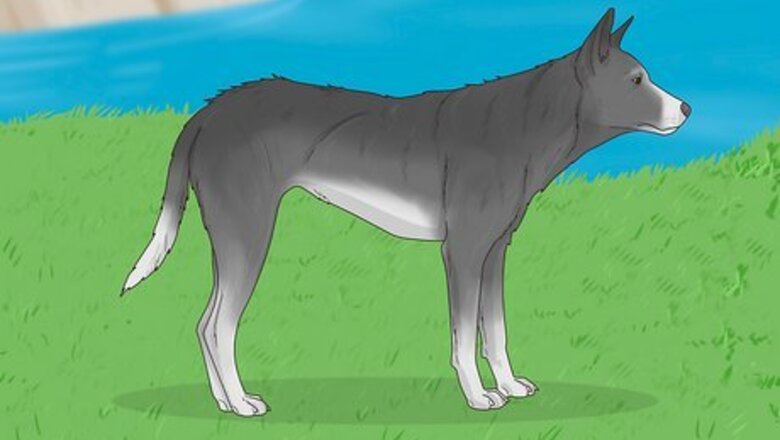
views
Encountering an Unknown Dog

Differentiate between stray animals and lost pets. If you happen upon a dog, you will most likely be able to tell whether the dog is a stray or a lost pet. Stray dogs may not have had any positive human contact and are not socialized towards humans. They tend to be wary of humans and their fear can be triggered into aggression. Pets that are lost are more likely to approach you and be comfortable around humans. They may be wearing a collar. They will probably be at a healthy weight, look cleaner, and appear as though they’ve been cared for. Your interactions with stray dogs and pets may be very different. However, just because a dog is a stray does not mean it is automatically aggressive or a safety threat to you. Dogs, stray or pet, that appear injured may come to you for help or they may be even more reluctant to approach you. It depends on the dog and its level of human socialization.
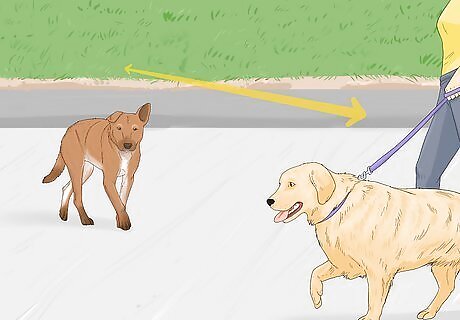
Assess the situation. You will need to take stock of the situation to decide how you will proceed. If you are with your pet, it is best to keep the two dogs separate and away from each other. Keep the widest distance between the two that you can, even if the other dog appears friendly. If the dog is friendly, you can return to the area that you found it after you’ve secured your dog at home or with someone else. If you have small children with you, keep them far away from the dog even if it appears friendly. If you see a dog approaching traffic, you must consider the safety of yourself and other drivers. The dog may run into the road, but you cannot run into the road to follow it. This is a major safety concern in which you must keep yourself safe. Do not corner the dog in a small or confined area. This can frighten and agitate the dog and make it act erratically.
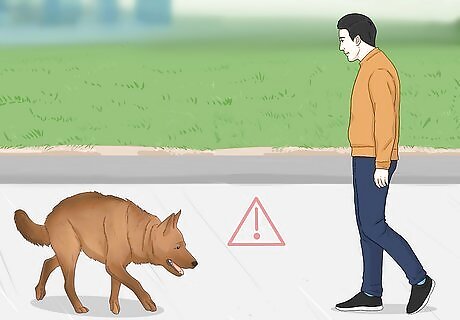
Stay calm. Staying calm is one of the most important things you can do in this situation. Dogs are aware of others’ fear, which may agitate them or make them afraid. Your concern should be your safety, the safety of the dog, and the safety of any others around you.
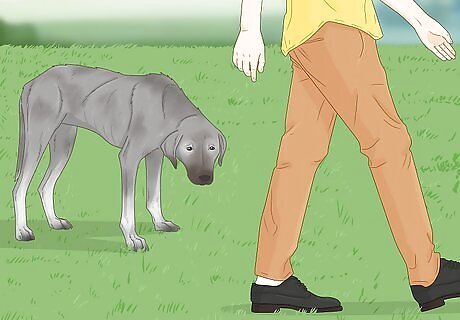
Walk away and don’t run. This is true for any situation with an unknown dog. A dog’s instinct is to chase anything that is running from them. This is not necessarily an aggressive act, but can lead to confrontation. If you plan to return to the area that you found the dog, you should speak in a soft and kind tone and back away from the dog. If the dog is aggressive, try to avoid any confrontation with the dog by backing away slowly.
Staying Safe Around an Aggressive Stray Dog
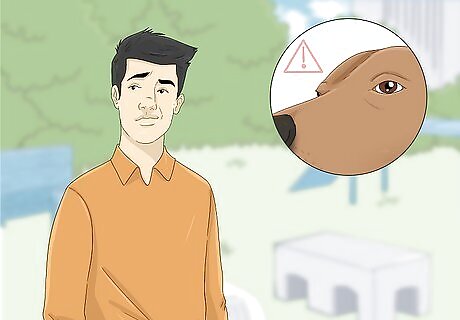
Send calming signals. When you signal to the dog that you are not a threat to their safety, they are more likely to stay calm and peaceful. Some calming signals that you can use are: Avoiding eye contact Standing sideways to the dog Letting them approach and sniff you (do not raise your hand in a sudden movement — this may frighten the dog and they may bite) Yawning Licking your lips

Avoid acting dominant. Aggressive behaviors may signal a threat to the dog, making them feel hostile or agitated. Aggressive behaviors to avoid include: Staring at the dog Making sudden movements Walking or running towards them Yelling or making loud noises.
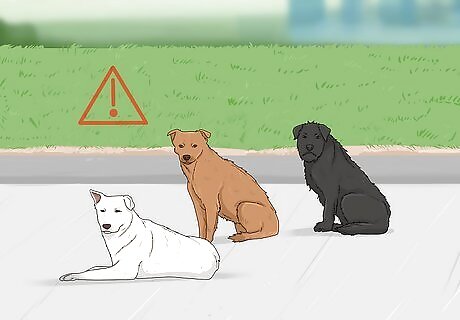
Avoid confrontation with large packs of dogs. A dog’s confidence is found in numbers. When a dog is in a pack, their confidence increases and they can pose a greater safety risk. You should not attempt to interact with a pack of dogs that you think are stray. It is best to call animal control and let them take care of the situation.
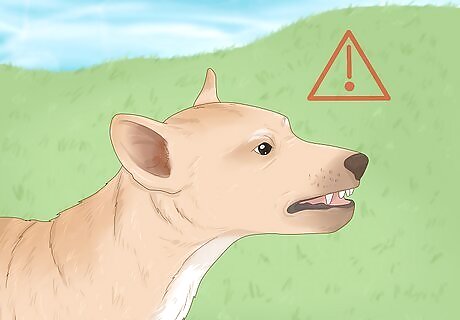
Assess the dog's body language. Dogs use body language to communicate that they are agitated, afraid, angry, or intimidated. Dogs that freeze when you approach them, curl their lips to show their teeth, or stand with their head low looking at you are agitated and can be aggressive. Do not approach a dog that is caring for puppies. Their maternal instinct to protect the puppies may make them less willing to interact with you. Dogs can show their aggression by snapping, growling, barking, lunging, and snarling. Avoid dogs that display these behaviors. If a dog displays aggressive behaviors, try to stay motionless and avoid direct eye contact with the dog. Stay quiet and resist the urge to run and yell.

Protect yourself during an attack. If you have done everything that you can to avoid an attack, but the attack seems imminent, your focus should shift to protecting yourself. Use an object like your bag, a stick, or a shirt wrapped around your arm to fend off the attack. Do not try to hit the dog. The dog will probably dodge the attack and be able to move closer in range to you. Use your forearm to shield your face, head, and neck at all costs. If you are knocked to the ground, curl up and use your hands to protect your neck with your face towards the ground. You can purchase pepper spray that is specifically designed to deter dogs, though unless you walk through the area with the pepper spray out, you will be unlikely to use it during a sudden attack. Do not run away, as the dog will most likely attempt to chase you.
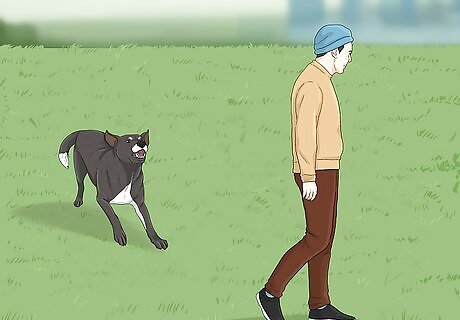
Leave the area. If you are able to avoid an attack and back away from the situation, you should leave the area immediately. If you have been attacked, you need to go to the hospital immediately. Let the emergency room know that you have been bitten by a dog and they will administer a rabies vaccine and treat your wound. Even if your injuries are minor and easily treated, you still see your doctor so they can determine if you need a rabies shot. Call animal control and let them known that you encountered a potentially dangerous stray dog. Be sure to tell them the location you found the dog, what the dog looked like, and how the dog was acting. They will determine the best course of action to get the dog out of the area and into a safe environment. In rural areas that do not have a local animal control, you can call the non-emergency telephone number for the police.
Helping a Lost Pet
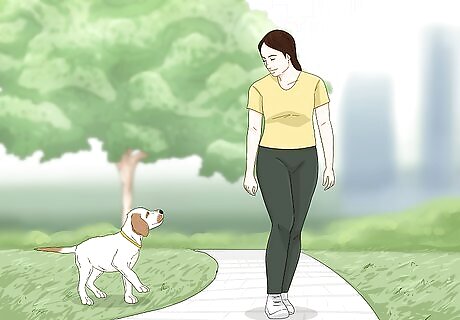
Take the dog with you. If you realize that the dog is approachable and friendly, you can try to entice them to go with you. A treat or friendly commands can be helpful to convince the dog to follow you. Do not corner the dog. This will make them feel trapped and even friendly animals can act erratically when they feel trapped in an area. The dog may follow you willingly. If it has a collar on, you can attempt to use a leash to lead the dog. Decide where to take the dog. Once you’ve convinced the dog to follow you, you have a few options. EXPERT TIP Sheri Williams Sheri Williams Certified Dog Trainer Sheri Williams is a Certified Dog Trainer and Behaviorist and the Owner of sheriwilliams.com, a business that specializes in teaching veterans how to turn their dogs into service dogs or emotional support animals to assist with PTSD. Based in the Los Angeles, California metro area, Sheri has over 20 years of dog training experience and also runs a general dog training practice specializing in rehabilitating dogs through positive reinforcement training techniques. She is certified by The Animal Behavior and Training Association. Sheri Williams Sheri Williams Certified Dog Trainer If you find a stray dog, try to locate the owner. If a stray dog comes to you willingly, try to safely catch it and check for ID. If you find a number, call the owner if you can. Otherwise, take it to a veterinary clinic in case it has a microchip with owner info.
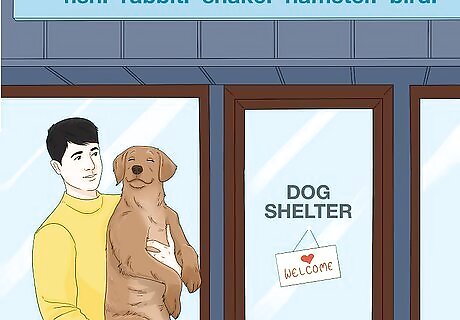
Take the dog to a shelter. A shelter is well equipped to treat any medical issues the dog may have and can house the dog. The dog may have an embedded microchip that has the owner's contact information on it. The shelter should have a reader to check for a microchip. Ask the shelter if anyone has reported their dog lost. Many shelters will take a picture of the dog and keep your contact information in the case that an owner comes looking for the dog. The shelter may release the dog into your care if you decide to take it home with you.

Take the dog home. If you feel comfortable and are able to take care of the animal, taking the dog home with you while you attempt to locate its owner. If you have other dogs, be sure to introduce the new dog in a safe and relaxed environment. Make posters with a picture of the dog and your contact information. Your area may have a local pet rescue that can find a home for the dog. Reach out to local veterinarians. They may be able to post flyers letting their patients know about the lost dog.
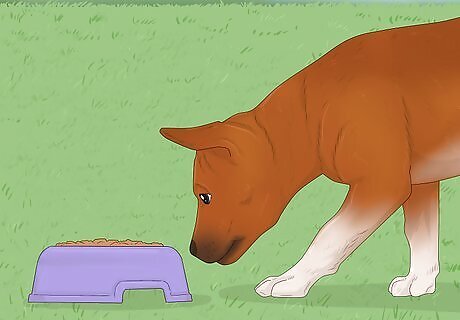
Leave food for the dog. If you are unable to take the dog with you, you can leave food and water near where you first saw the dog. This is a good way to encourage the dog to be more trusting around humans.















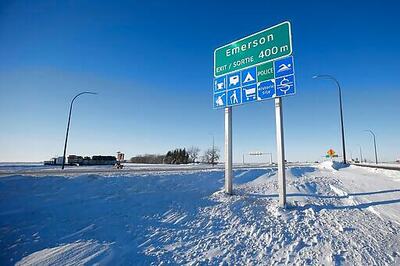




Comments
0 comment